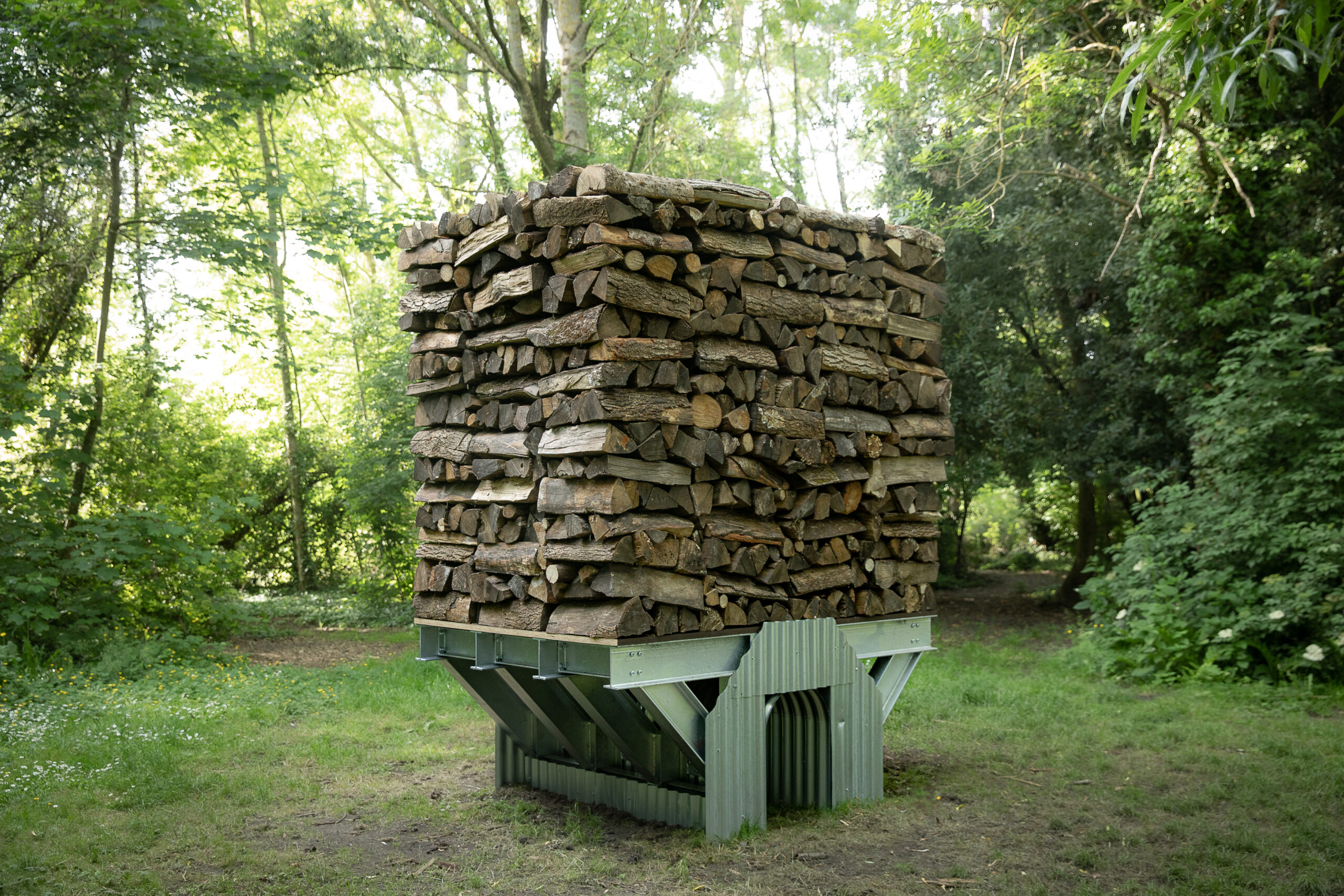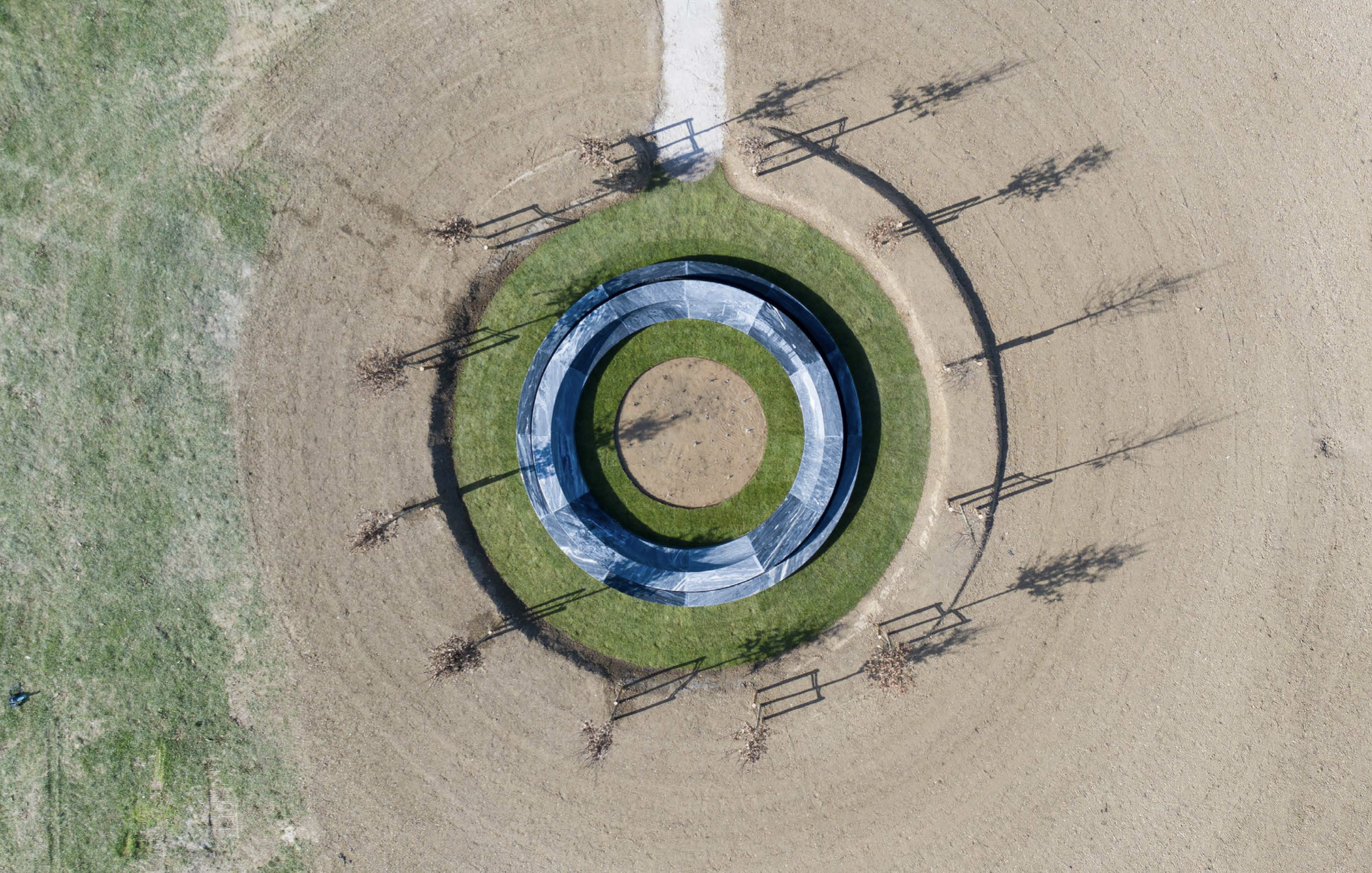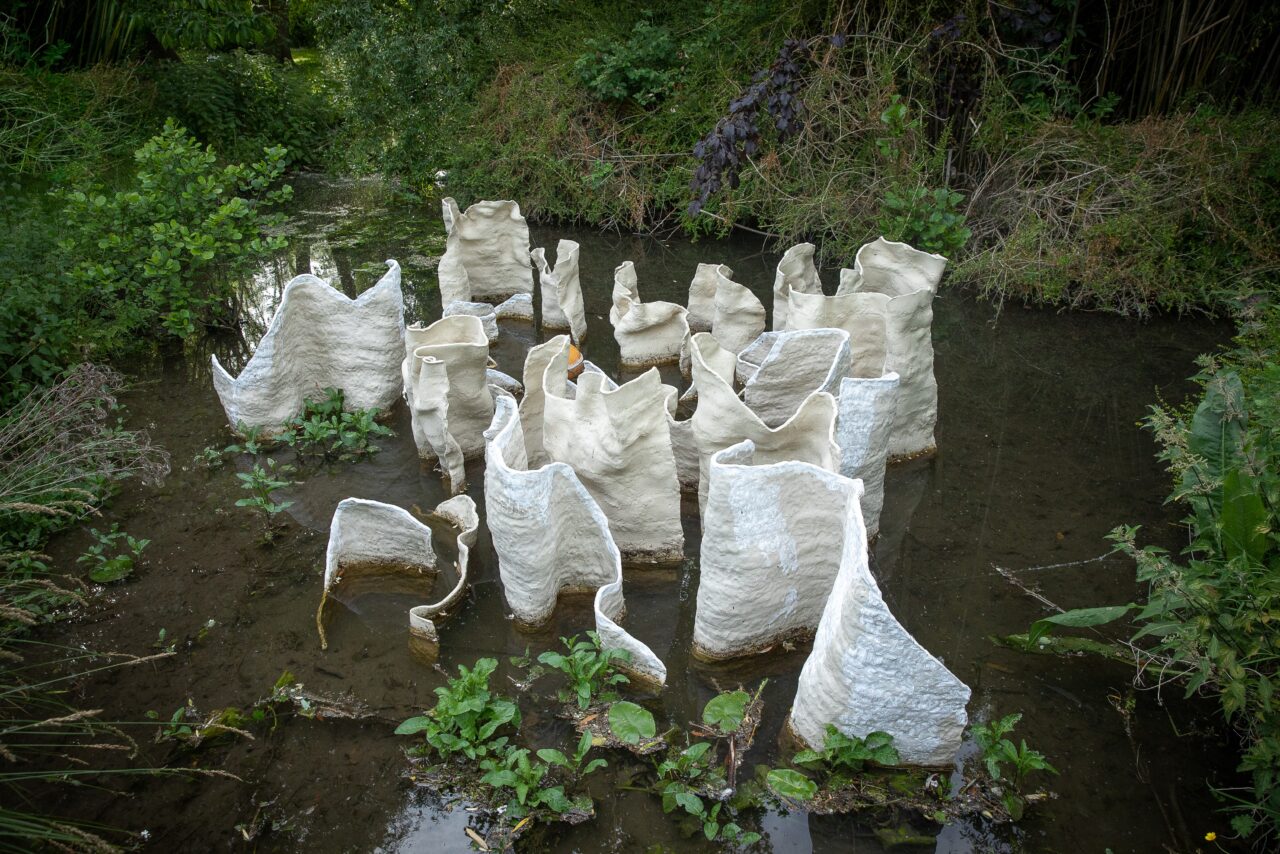Akpaku, calabash in Éwé (a language spoken in Togo), is a fruit used in the dry state for various uses which has above all a symbolic function in certain African beliefs, that of a ritual object materializing the shape of the invisible world on Earth and serving to preserve sacred decisions between men and divinities. In the Hortillonnages, the work of Kokou Ferdinand Makouvia takes up this ritual. Akpaku summons the ancestors of the places for a conversation with the elements of the site in order to think on the preservation of this environment and its identity. During the creation process, the artist collects small objects on either side of the plots and collects memories from the inhabitants of the towns near the site. Filled with these finds and hermetically sealed, the calabash then forms the core of a gigantic floating ceramic lettuce, in homage to the market gardening era of the Hortillonnages. Lettuce leaves come from the four elements of nature used through the ceramic technique: earth and water, then air and fire. Like protective walls, they constitute an intelligent architecture around the calabash, a “sacred space” of conversation between the living forces of the Hortillonnages. The work then becomes a concentrate of the energies of the site. The visitor is invited to participate in this Akpaku ritual, this great and infinite conversation, by saying a few words on a handful of earth that he can throw in the water next to the installation.
CAMON / PORT À FUMIER – Boat trip In CAMON, rent a boat for 2h30 and sail to the different plots invested around the pond of Clermont. The rental price of a boat is based on the number of people, from 1 to 6 max. including child(ren) under 3 years old We invite visitors to continue to respect barrier gestures in order to fight against the spread of COVID-19. For any request for information, you can send an email to communication@artetjardins-hdf.com Looking forward to welcoming you soon! The team of Art & Jardins | Hauts-de-FranceInternational Garden Festival |
Hortillonnages Amiens 2023
Visit of the exhibition by boat
Boarding pontoon
35 rue Roger Allou – 80450 Camon
* 20€ / 1-2 people. * 27€ / 3-4 people. * 32€ / 5-6 people. * free -3 years old
+ ASCO fee per person: €1 / 11 years and + * €0.50 / 3-10 years
>>> Only by online reservation
To read the terms and conditions of sale, click here
For security reasons, animals are not allowed in the boats. Strollers must be dropped off at reception.
If you want more details, we invite you to consult the evolution of the reception instructions and the health rules in force on the government website: https://www.gouvernement.fr/info-coronavirus
or call +33 6 78 53 55 92




